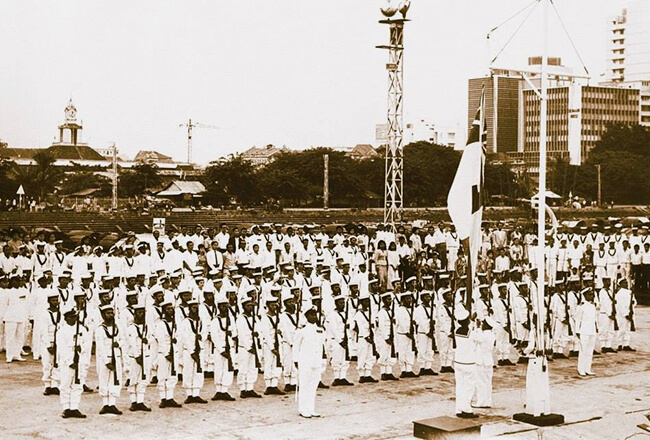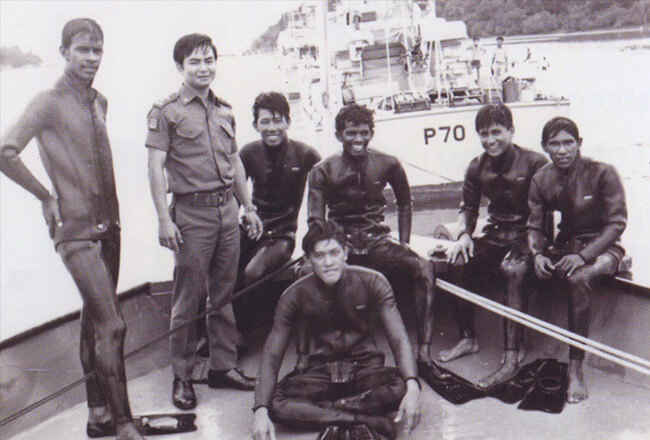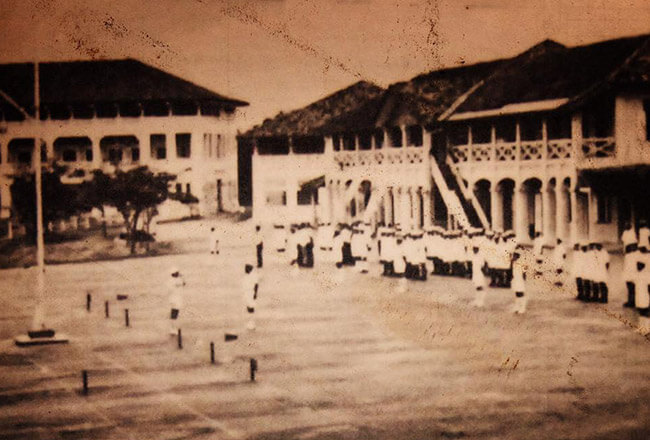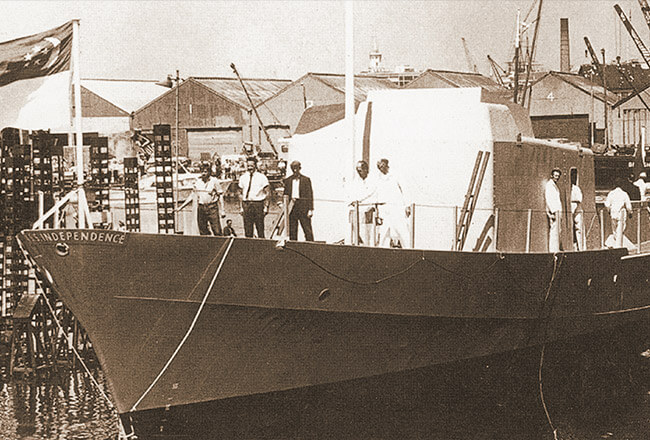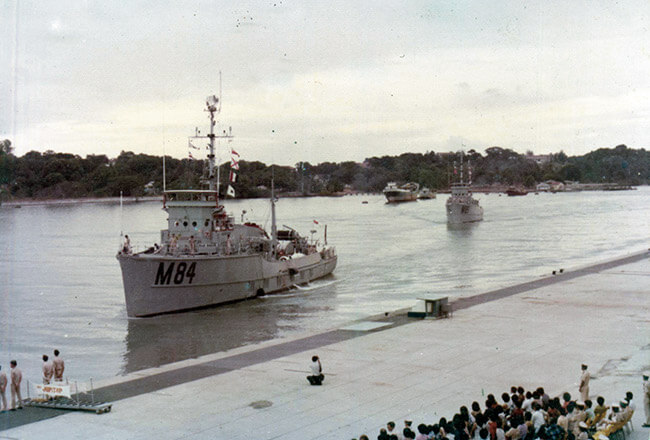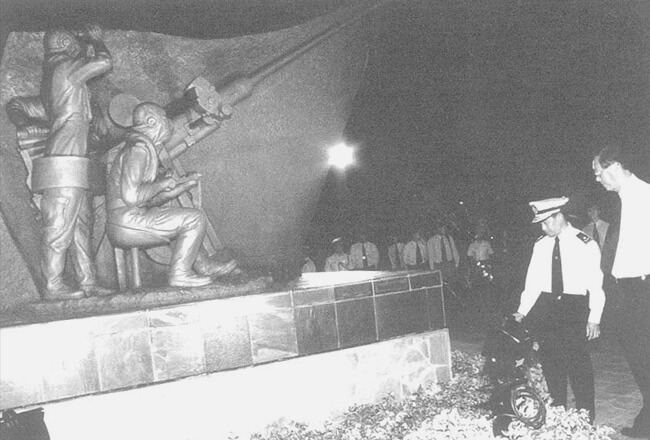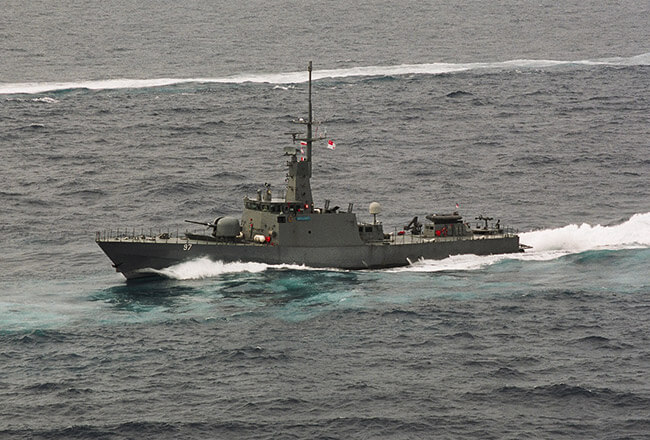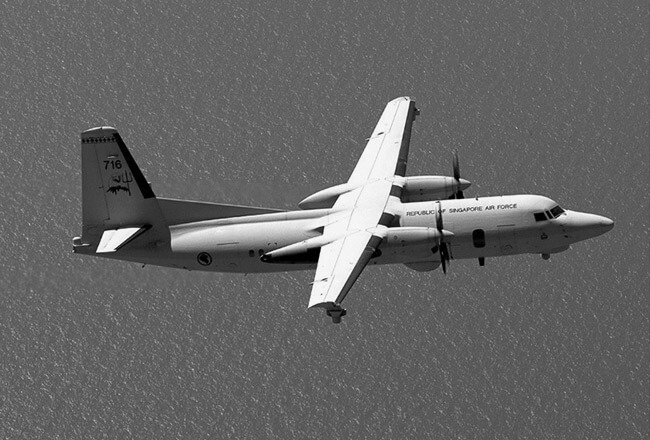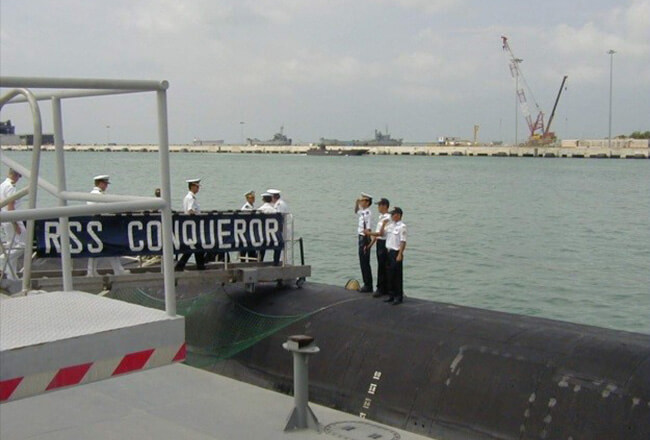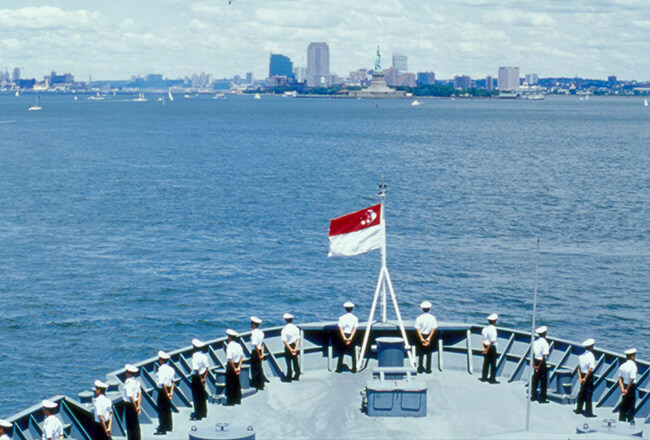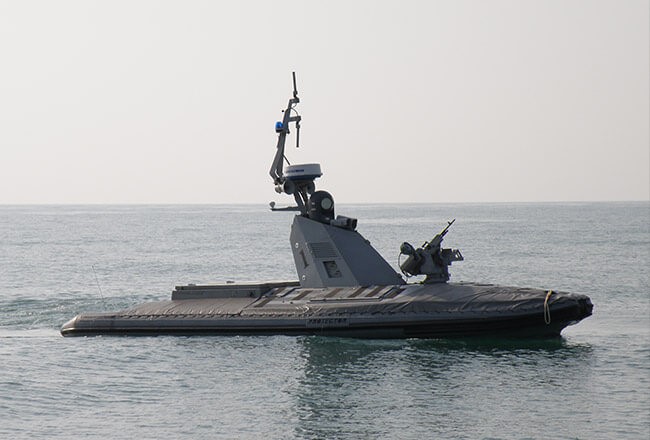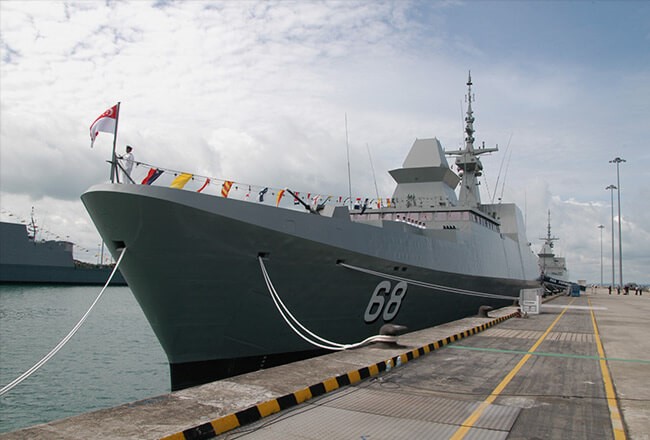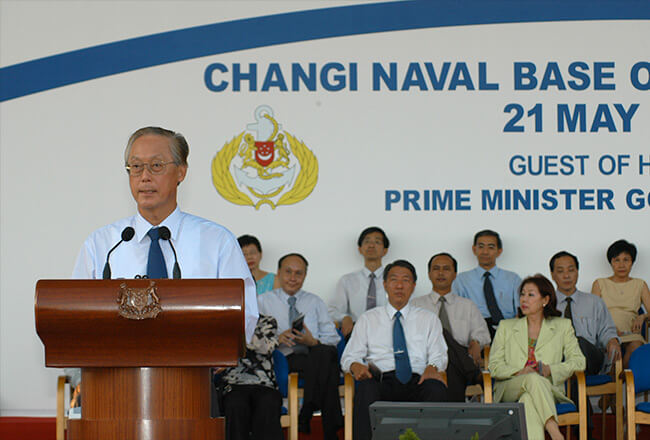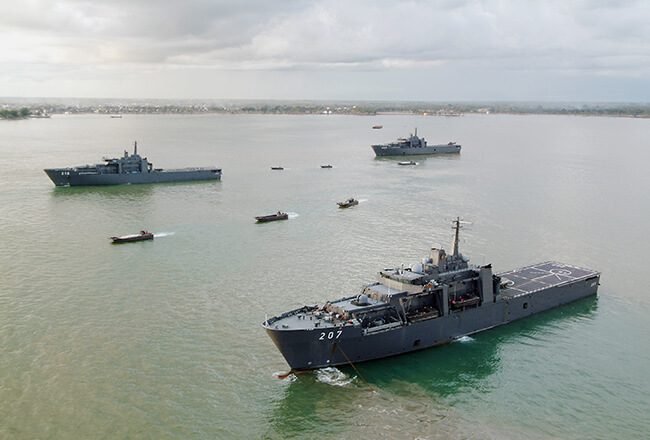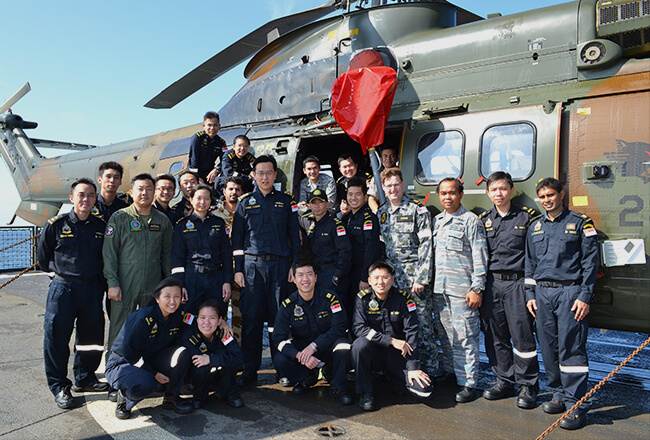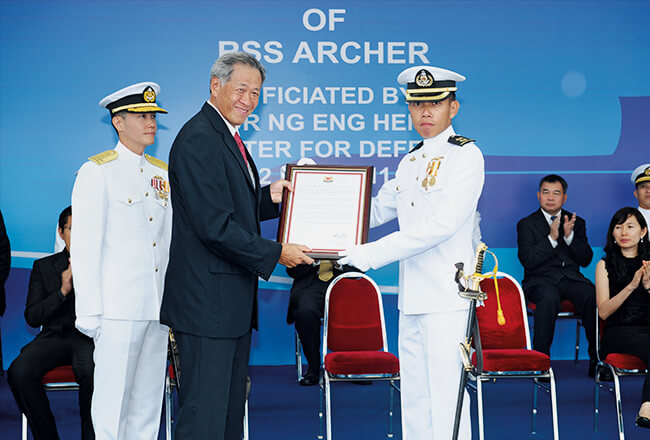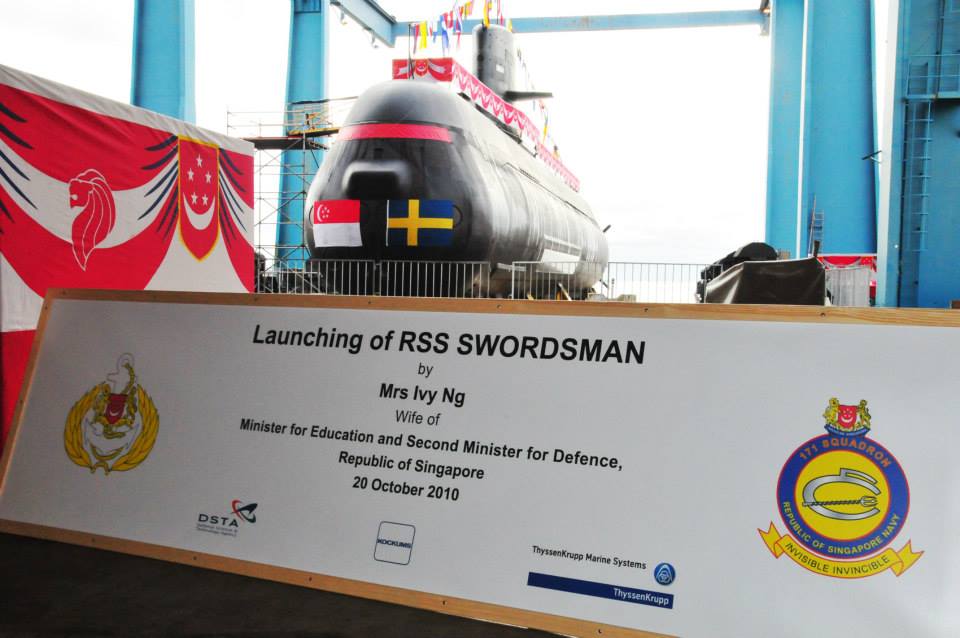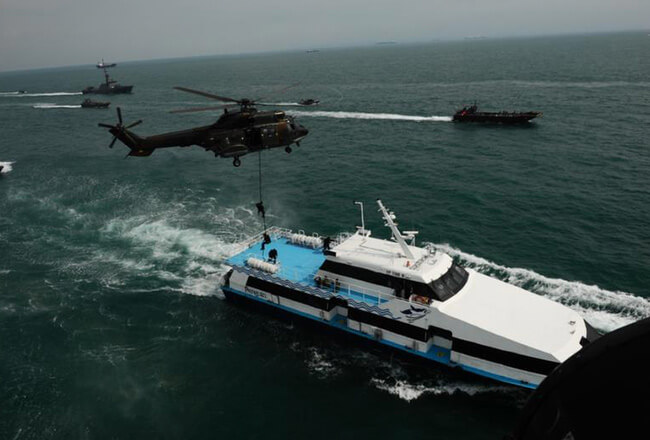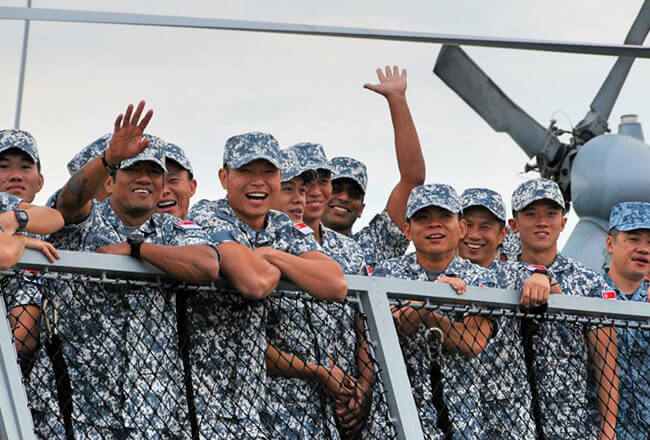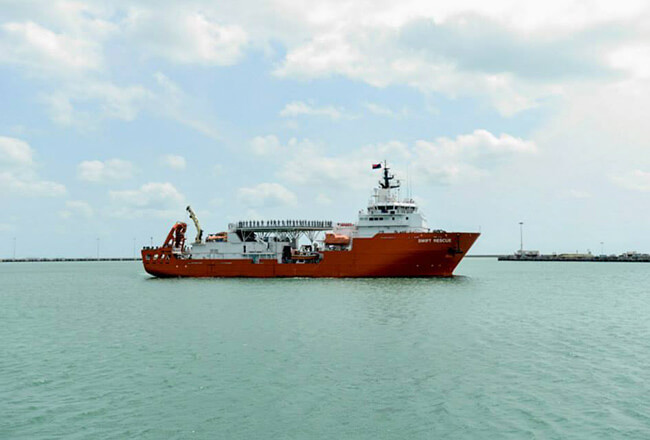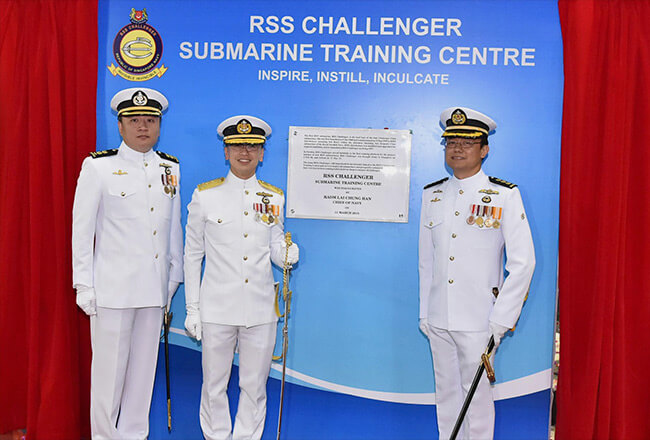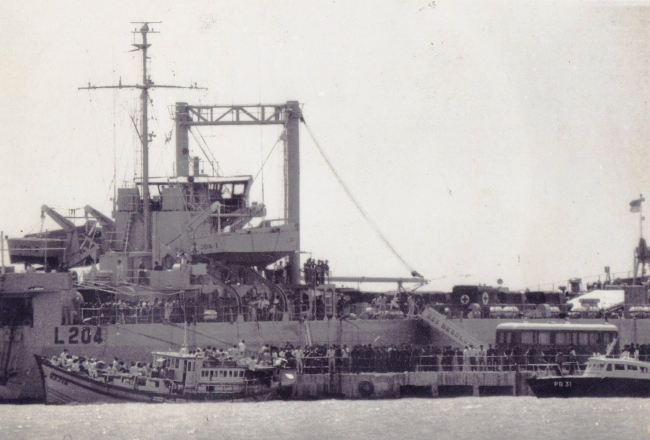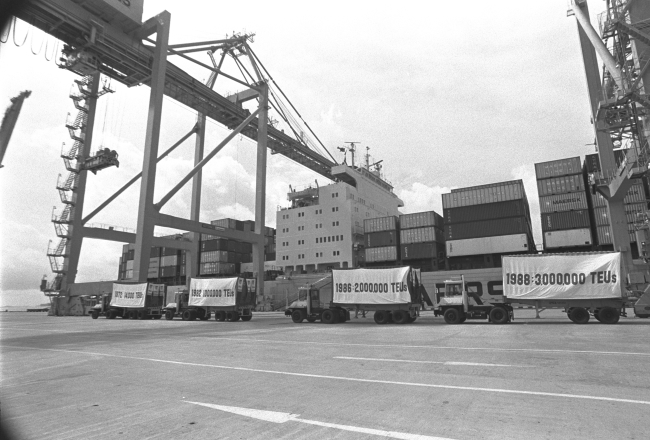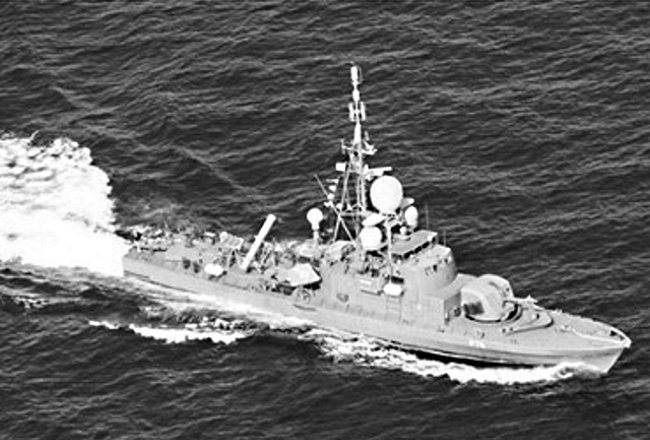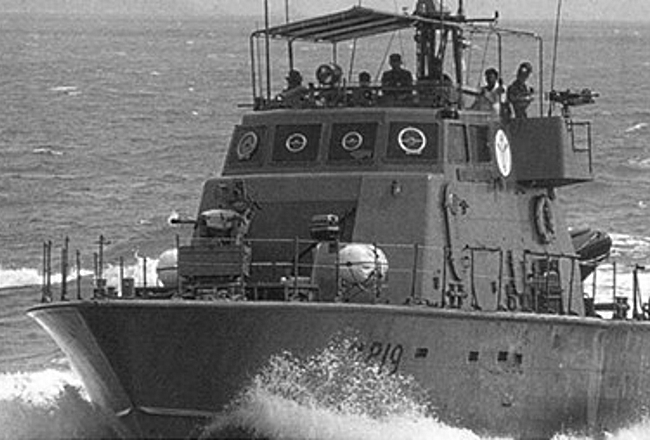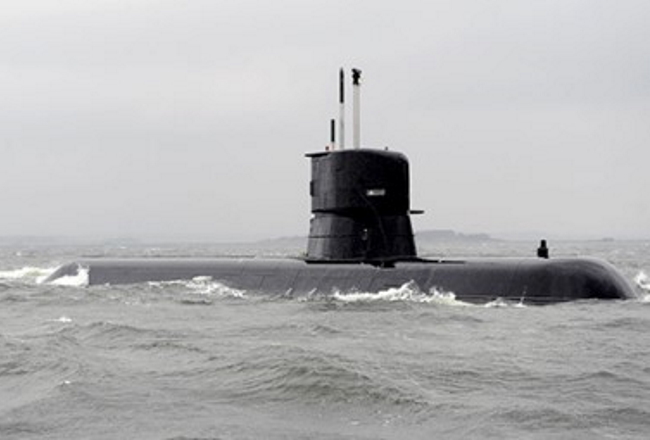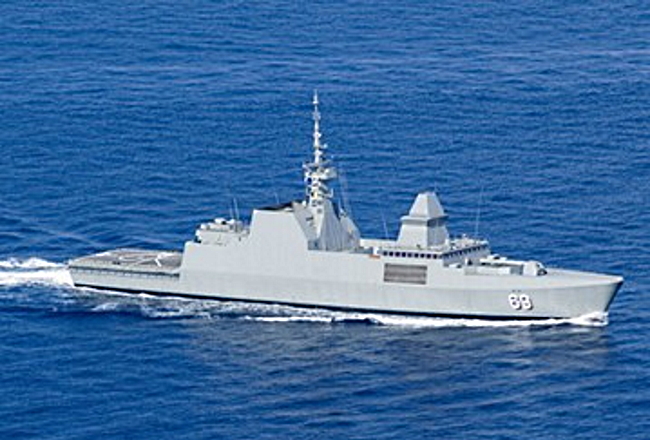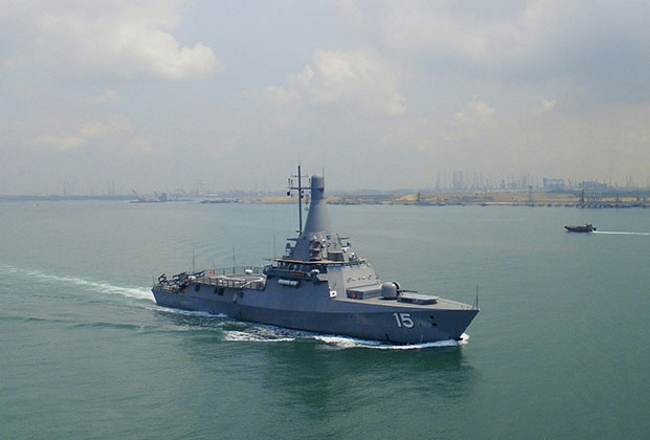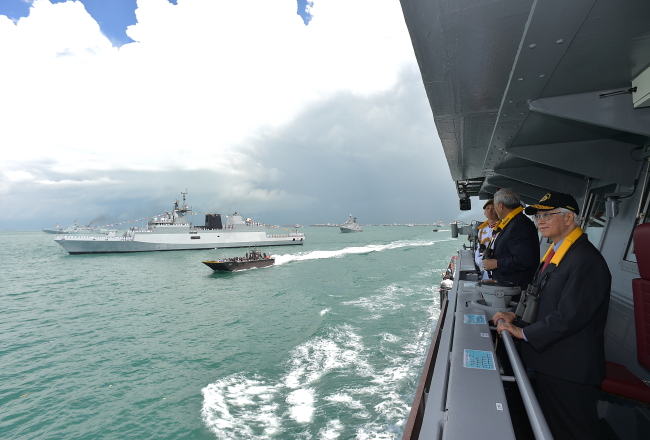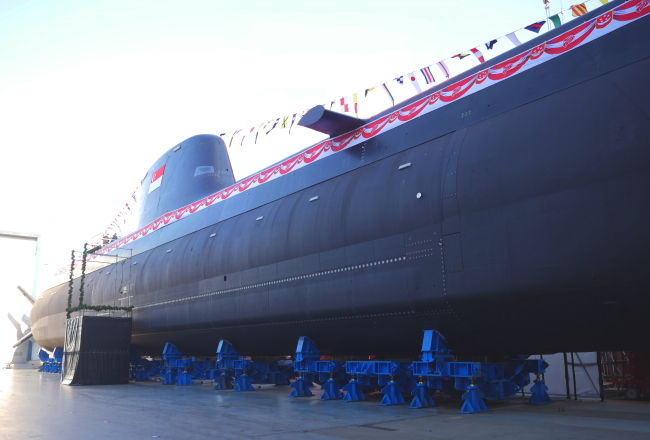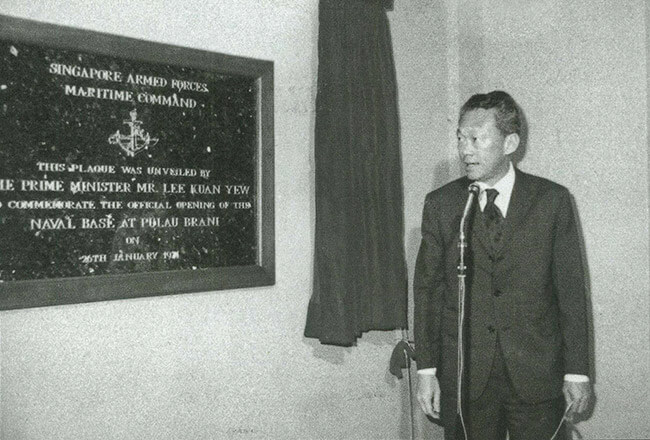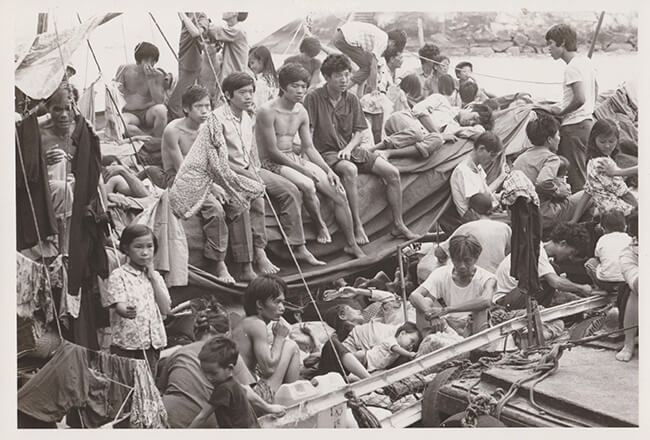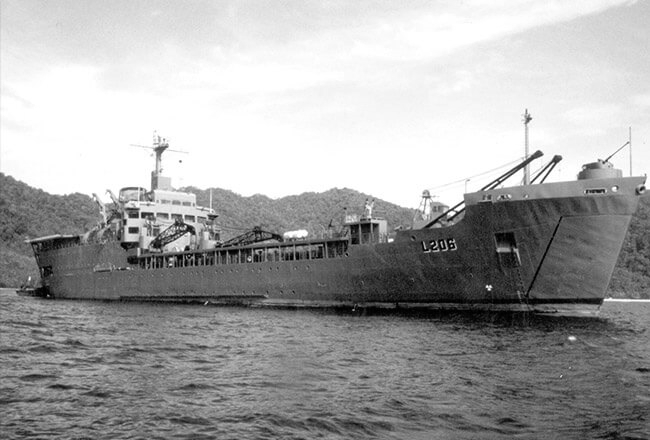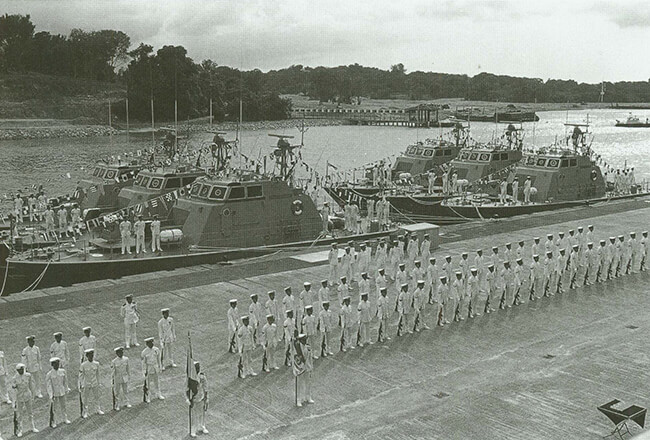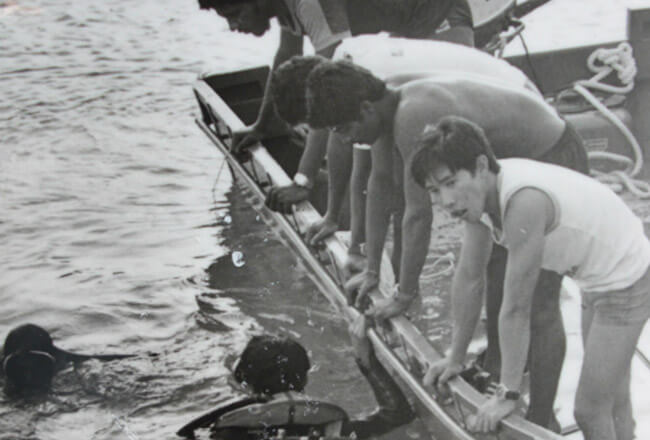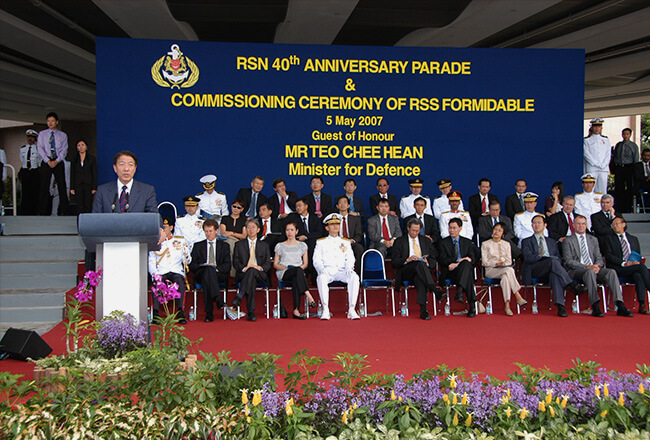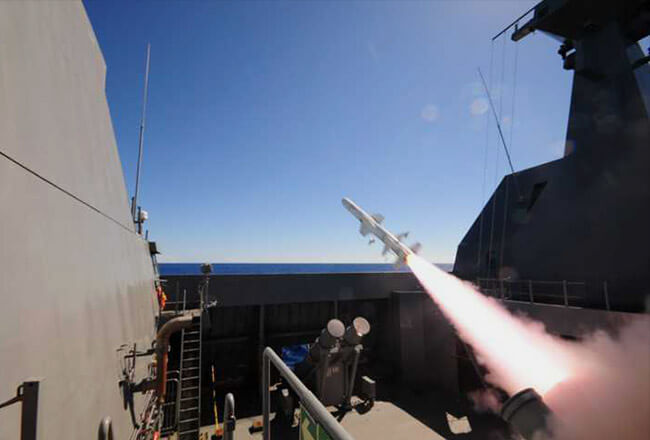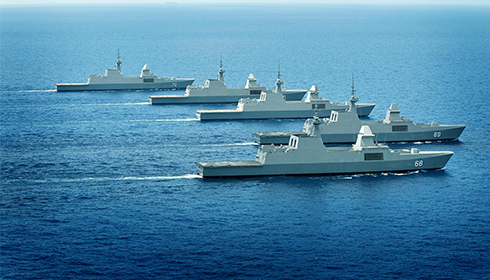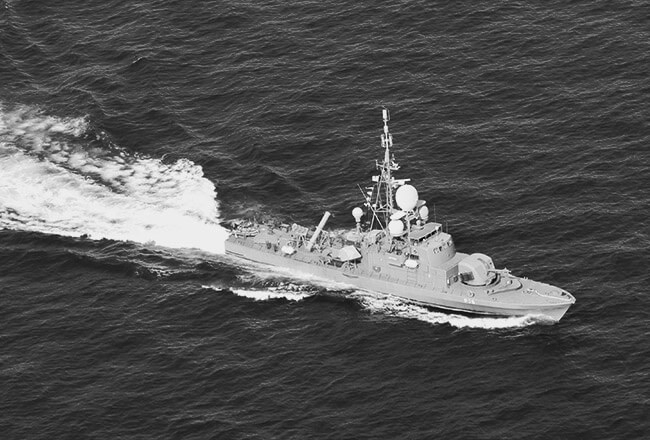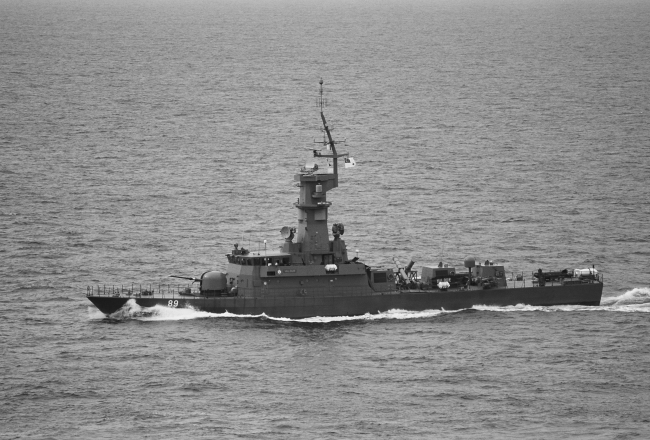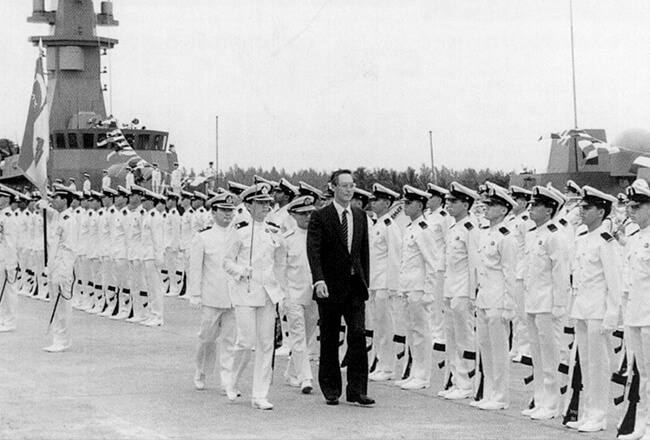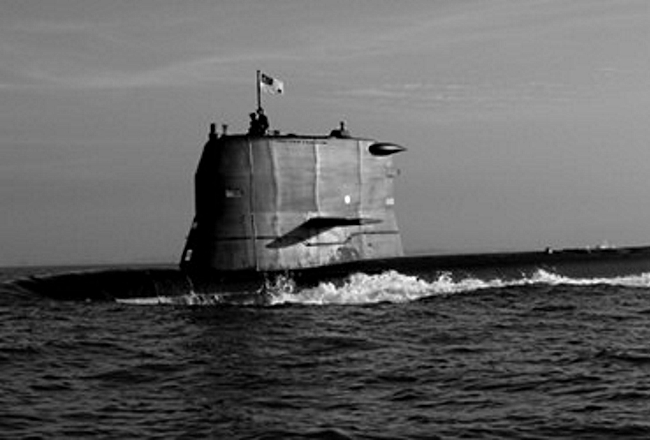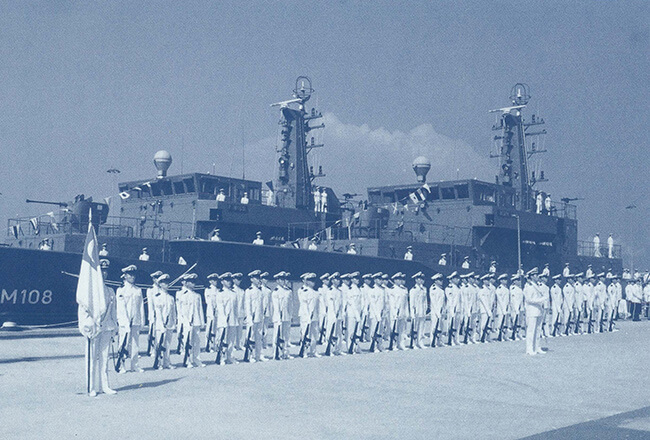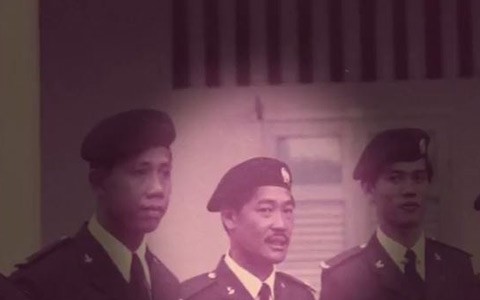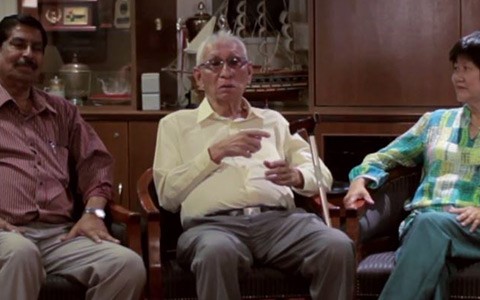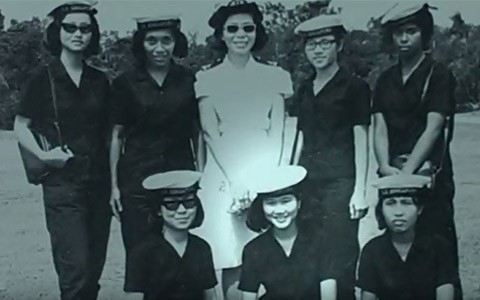Humble Beginnings
On 5 May 1967, the ensign of the Singapore Naval Volunteer Force (SNVF) was raised for the very first time at RSS Singapura, the SNVF’s first headquarters, signifying the birth of the Singapore Navy.
With only two wooden boats vessels – RSS Panglima and RSS Bedok, which were formerly from the Royal Navy – our fledgling Navy was given the charge of defending a young maritime Singapore. (The name "Republic of Singapore Navy" was only adopted on 1 April 1975.)
Our Pioneering Frogmen
The SAF Diving Centre was formed in 1971, comprising a small group of 16 divers. Replacing the Royal Navy's Far East Fleet Clearance Diving Team, they took on the task of protecting our naval assets. In 1975, the unit became known as the Naval Diving Unit (NDU).
Training in the Early Days
Our first training school was also on board RSS Singapura. By early 1969, the Naval Training School was set up at Pulau Blakang Mati, which is now known as Sentosa. Instructors from the Royal New Zealand Navy assisted in training the first batch of 160 naval recruits, comprising 20 electricians, 20 engineers and 120 seamen. Midshipmen were sent abroad to Britain, Australia, New Zealand and Canada to learn from established navies and to gain operational exposure.
The “Super Boats”
As Singapore’s maritime trade grew, there was a greater need to ensure trade could take place unmolested in our straits. The Navy acquired the Independence-class patrol craft (PCs). The first PC, RSS Independence, was commissioned in December 1970. The PCs protected our coasts against maritime threats such as smuggling and sea robberies.
Our Minesweepers
To provide the Navy with minesweeping capability, two old Coastal Minesweepers were procured form the United States. These small ships sailed more than 13,000 kilometres from San Francisco to Singapore over 63 days. It was a journey of epic proportions for a tiny Navy – in it was the first-ever sail across the Pacific Ocean. RSS Mercury and RSS Jupiter encountered three super typhoons – Nancy, Olga and Pamela – from Guam to Subic Bay in the Philippines. The crew also had to cope with numerous mechanical and technical problems during their more than two-month long voyage. On 4th June 1976, the two ships arrived in Singapore.
Opening of Tuas Naval Base
Tuas Naval Base was built to house our growing Navy. Officially opened on 2 September 1994, many innovations were introduced into its design so that we can do more with less. Smart design created wharfage two and a half times more than that in Brani Naval Base within a much smaller land area. State-of-the-art innovations such as mechanical ramps for vehicles, an automatic storage and retrieval system, and a floating dock (which can lift ships of up to the size of a missile corvette to facilitate ship repairs and maintenance) were built to improve work efficiencies.
Fearless Protectors
The first Fearless-class patrol vessel (PV), RSS Fearless, was commissioned in 1996. Build and designed locally, the PVs took on the coastal defence role that was previously undertaken by the CPCs. The PVs is out deployed in daily patrols in the Singapore Strait and the waters surrounding Pedra Branca.
Far-seeing Eyes
19 February 1997 saw the full operational capability of the Maritime Patrol Aircraft (MPA). The MPAs provide the RSN task force and shore headquarters with a good wide-area sea situational picture. In war, they enable early detection and identification of enemy ships, allowing RSN ships to engage hostile ships well beyond the horizon. In peace, they are deployed for a range of missions such as search and locate and maritime surveillance operations. The MPAs are also equipped with the Harpoon missile, which gives them maritime strike capability.
Conquering New Depths
Submarines are a key component of a balanced and capable Navy. The RSN's underwater capabilities took a major step forward with the acquisition of four Challenger-class submarines from Sweden in the 1990s. On 2 May 2000, RSS Conqueror became the first submarine to arrive home in Singapore.
Enter the Giants
On 5 May 2000, our first Endurance-class Landing Ship Tank (LST), RSS Endurance, entered service. Immediately after, it sailed out to circumnavigate the globe in four months. Through heavy seas and seven-metre high waves, it took part in the International Naval Review in New York during the journey. Over the years, the LSTs have been deployed for numerous operations – from peace support, counter-piracy and humanitarian assistance and disaster relief.
Dawn of Unmanned Systems
The RSN was possibly one of the first few navies in the world to deploy an Unmanned Surface Vessel (USV) for actual operation. During RSS Resolution's deployment to the Northern Arabian Gulf, the Protector USV was used in the protection of critical infrastructure at sea from terrorist attacks.
Welcoming the First Formidable-class Frigate
The first of the RSN’s six frigates, RSS Formidable was launched on 7 January 2004. Equipped with advanced sensor and weapon systems, and with enhanced anti-air, anti-surface and anti-submarine warfare capabilities, the introduction of the frigates enabled the RSN to undertake a wide spectrum of missions.
A 21st Century Home
Our then Prime Minister, Mr Goh Chok Tong, officially opened the Changi Naval Base on 21 May 2004. The base has several advanced features, such as an automated underground ammunition depot and an automated warehouse system.
Aiding Our Neighbours In Need
As part of Singapore’s relief assistance to countries stricken by the earthquake and tsunami on 26 December 2004, the RSN despatched three Landing Ships Tank – RSS Endurance, RSS Persistence and RSS Endeavour – and other support vessels to Indonesia to assist in the humanitarian relief effort.
Foiled Pirate Attacks in Arabian Sea
The RSN’s Landing Ship Tank, RSS Endeavour, disrupted two separate attacks by suspected pirates on merchant vessels that were transiting through the Arabian Sea, south of Oman.
Welcoming a New Member
Minister for Defence Dr Ng Eng Hen officiated the commissioning ceremony of RSS Archer, the first of the two Archer-class submarines of the RSN in December 2011. Since its acquisition from the Royal Swedish Navy in 2005, the RSS Archer, an ex-Royal Swedish Navy Vastergotland-class submarine, has been upgraded, refurbished and tropicalised for peak performance in the waters around Singapore.
Deployment of The First Frigate to The Gulf of Aden
The deployment of RSS Intrepid and the Sikorsky S-70B naval helicopter marks the first operational deployment of the frigate and naval helicopter for counter-piracy operations in the Gulf of Aden, under the ambit of Combined Task Force 151 in September 2012.
Second Archer-Class Submarine Launched
RSS Swordsman, the RSN's second Archer-class submarine was commissioned in April 2013. Acquired from the Royal Swedish Navy in 2005 and launched in Sweden in 2010, RSS Swordsman went through extensive sea trials in Sweden before returning to Singapore in December 2012.
Upgrade for Missile Corvettes
The RSN fleet of missile corvettes (MCVs) received extensive upgrades in May 2013, breathing new life into the warships first commissioned in the early-1990s. Besides system upgrades, the addition of a Scan Eagle Unmanned Aerial Vehicle (UAV) at the rear of the warships enhanced the MCVs’ ability to conduct extended range of surveillance and identify targets.
RSN Leads National Response to Maritime Counter-Terrorism
The RSN led the national response to maritime counter-terrorism in the first Exercise Highcrest, an exercise jointly led by the Ministry of Defence and Ministry of Home Affairs.
Our Sailors Return
151 of our brave sailors from RSS Tenacious, a Formidable-class frigate returned from their international counter-piracy mission in the Gulf of Aden in June 2014. This marked the second operational deployment of our frigates for counter-piracy operations in the Gulf of Aden.
Search for AirAsia Flight QZ8501
During the search operations for the missing AirAsia flight QZ8501, more than 400 SAF personnel were deployed, together with assets including five of the RSN’s ships; our missile corvette RSS Valour, our frigate RSS Supreme, our landing ship tank RSS Persistence, and our mine countermeasure vessel RSS Kallang, MV Swift Rescue, as well as a six-man Autonomous Underwater Vehicle team from our Navy. During their time out in the Java Sea, they had to battle stormy weather and rough sea state, which made the search even more challenging. MV Swift Rescue managed to locate the main fuselage of the aircraft, and its return to Singapore marked the end of the SAF's 22-day deployment.
Submarine Training Centre
The RSS Challenger – Submarine Training Centre was officially opened on 11 March 2015, marking a major milestone in the RSN’s submarine journey, and will be a one-stop training facility for our silent warriors of the deep. Our pioneer submariners were invited to the ceremony, where two of our Challenger-class submarines – RSS Challenger and RSS Centurion – were also retired from service. Since 1997, both submarines have served us well and trained our early batches of submariners in both Sweden and Singapore. In honour of RSS Challenger’s role as the first submarine of our Navy, the STC has been named RSS Challenger and its legacy will continue to inspire submariners for generations to come.
Newly-Operationalised Rapidly Deployable Maritime Containers
The Navy Medical Service’s newly-operationalised Rapidly Deployable Maritime Containers (RDMCs) were deployed for the first time in Operation Surya Bhaskara Jaya. Expandable to about three times its original size, the RDMCs were utilised as an operating theatre and an intensive care unit, allowing additional surgeries to take place on the flight deck of RSS Endeavour.
RIMPAC 2016
RSS Steadfast was the first non-US ship to lead a multinational group sail from Okinawa, Japan to Hawaii for the Rim of the Pacific Exercise.
Crisis of Confidence
After Ops Thunderstorm, the RSN was buffeted by a series of setbacks. The tempo of anti-illegal immigrant operations had to be sustained, but it was a huge challenge with the absence of a comprehensive shipping picture in the Singapore Strait. There were many illegal immigrant boats. However, on a sustained basis, the RSN could have only two ships on patrol each day. Some boats slipped through the Navy’s net and were stopped by the Marine Police. The operational utility of the Navy beyond the Singapore Strait was in serious question, and the RSN had a difficult time trying to define its longer-term role. The RSN was in a dismal state. Long term and capability planning was on a hiatus.
Redefining the Navy’s Strategic Role
The RSN started to examine from first principles why Singapore needed a Navy – Singapore is a maritime nation, the sea is Singapore’s lifeline. Our economic well-being depended critically on trade, most of which came by sea. Hence, the protection of the sea lines of communication (SLOCs) was vital for sustaining Singapore’s economic well-being. The need to secure Singapore’s SLOCs became a strategic mission of the RSN. From there on, the RSN had its raison d'être, the reason for existence. [Photo: Ministry of Information and the Arts Collection, courtesy of National Archives of Singapore]
Raising Wolves
This year saw the addition of the Sea Wolf-class missile gunboats (MGBs), which marked our young Navy's foray in to maritime warfare. The MGBs were equipped with the latest radars, electronics and missiles; and remained at the sharp edge of naval warfare with system upgrades over the next two decades. RSS Sea Wolf was the first ship in the region to successfully fire an anti-ship missile.
Our Very Own Design and Built
The Swift-class coastal patrol crafts (CPCs) were added to RSN's arsenal of capabilities. The first vessels designed and built locally, the CPCs complemented the PCs' constabulary duties in protecting Singapore's immediate waters. This helped to relieve the MGBs of daily patrol, allowing the MGBs to focus on naval warfare operations. In 1993, the CPCs were transferred to the Police Coast Guard, where they continued to perform coastal patrol missions until 2012.
Eyes Underwater
This year saw the expansion of the RSN's underwater capabilities with the acquisition of the Archer-class submarine from Sweden. The Archer-class is equipped with Air Independent Propulsion technology, which further enhances the stealth capabilities of our submarines. In 2013, the year the Archer-class project was completed, the RSN announced further development for its submarine force: we are to acquire Type 218SG submarines from Germany. This marks the RSN's venture into customising the design of our underwater assets to suit Singapore's unique maritime environment.
New Season, New Technology
The Formidable-class frigates signalled the RSN's transformation into the 3rd Generation Navy, with the first frigate, RSS Formidable, commissioned in 2007. Armed with cutting-edge combat systems, the frigates replaced the MGBs and provided the RSN with greater "strike" naval warfare capabilities. The warships can operate with Sikorsky S-70B Seahawk naval helicopters, which further enhance the frigates' warfighting abilities in the air and underwater dimensions.
A New Era of Independence
The first-of-class of the Independence-class littoral mission vessel (LMV), RSS Independence, was commissioned on 5 May 2017. The locally designed and built ships are designed to meet evolving maritime threats. Highly configurable, the LMVs can be deployed in a wide range of missions, from patrols, boarding operations, search and rescue missions to humanitarian and disaster relief operations.
Celebrating the Golden Jubilee
50 years after the Singapore naval ensign was first raised, the RSN gathered together to remember this significant moment at 5.55pm on the parade square of RSS Panglima – Changi Naval Training Base. With veterans, past and present RSN personnel standing witness, the midshipmen and navy trainees raised the white naval ensign. Earlier in the day, Prime Minister Lee Hsien Loong also launched the RSN50 Commemorative Book and sealed the RSN50 time capsule.
The First Singapore International Maritime Review
President Tony Tan officiated at the inaugural Singapore Maritime Review. In total more than 46 warships and four aircraft from 44 nations were reviewed in Changi Naval Base and the water just off the base. The large turnout testified to the friendship and strong ties the RSN forged over the years.
Launching Invincible
The RSN's launched its first Invincible-class submarine, Invincible, in Germany on 18 Feb 2019. This brand-new submarine was designed for operations in Singapore's shallow and busy tropical waters and tailored to the RSN's requirements. The new submarines will possess longer endurance and higher payloads.
Our New Home
On 26 January 1974, then Prime Minister, Mr Lee Kuan Yew, officially opened Brani Naval Base – our first naval base, our home. The centrally located base at Pulau Brani made it possible for Navy ships to be quickly deployed anywhere within the Singapore Strait.
A Test of Mettle – The Laju Incident
On 31 January 1974, four armed men attacked the Shell oil refinery complex on Pulau Bukom, to disrupt the oil supply from Singapore to other countries. They detonated three explosives and hijacked the ferry Laju and held five crew members hostage. Four ships, RSS Sea Hawk, RSS Independence, RSS Sovereignty and RSS Daring were mobilised for the mission. They cornered and prevented the terrorists from leaving. The terrorists finally agreed to release the remaining crew members in exchange for a safe passage back to the Middle East.
Establishment of the Midshipman School
In April 1974, the Midshipman School was formed. Housed within the Sembawang Naval Training Centre, the school was set up to train officers locally. Our pioneer cohort of locally trained midshipmen, the Class of '74, consisted of 12 regulars and 30 national servicemen, which was much more than the number trained overseas annually.
Packing a Punch
In 1974, the RSN became the first Navy in the region to fire a Surface-to-Surface Missile.
Ushering in a New Era – Missile Gunboats
The six Patrol Craft, designed for constabulary duties, lacked reach and a lethal punch. On 22 January 1975, the RSN commissioned the first three Sea Wolf-Class Missile Gunboats (MGBs). Capable of sinking warships many times their size with the latest radar, electronics and missiles, the MGBs were likened to “pocket battleships”. Configured for quick, decisive strikes, the MGBs marked the RSN’s first foray into maritime warfare.
Our Flying Vans
In 1973, Singapore acquired eight SH 7 Skyvans, taking to the skies to enhance the range and versatility of the Navy's reconnaissance capabilities. In April 1975, our Navy took to the skies. The Skyvans flew for their first maritime air surveillance (MAS) mission, acting as the "eyes in the sky" for the RSN, to boost the security of Singapore's sea lines of communication, which were vital for a rapidly industrialising nation. Jointly operated by the RSN and the Republic of Singapore Air Force, Skyvan's six-man crew included a Navy Action Information Coordinator and a Navy radar operator.
Baptism of Fire – Operation Thunderstorm
On 2 May 1975, the first SOS distress signal was picked up from a ship carrying 300 people from Indo-China. More vessels continued to stream in over the next 13 days, totalling 64 ships and 8,408 "boat people".
One Dollar Ships
In December 1975, to boost the SAF’s sealift capabilities, the RSN acquired a squadron of World War II-era County-class Landing Ships Tank (LSTs) from the United States Navy at a token price of a dollar each.
Acquisition of Coastal Patrol Craft
With its mission refocused and its strategy redefined, the RSN embarked on a process of revitalisation. The decision to acquire 12 Coastal Patrol Craft (CPC) was significant in contributing to the revitalisation of the RSN. Designed and built locally, they were commissioned in October 1981. The CPCs helped to relieve the Missile Gunboats from the task of daily patrols, which allowed the strike squadron to focus on honing its war-fighting skills.
Sentosa Cable Car Incident
The naval divers were activated to assist in the search and recovery operation of two cable cars that plunged into the water off Jardine Steps after the mast of a drill ship severed the cables of the cable car line.
A Formidable Navy
Marking the RSN’s 40th year, the first Formidable-class Frigate, RSS Formidable, was commissioned on 5 May 2007.
Raising Our Professional Stature
RSS Steadfast, our Formidable-class Frigate, participated in the multilateral Rim of the Pacific (RIMPAC) naval exercise for the first time from 27 June to 31 July 2008. It successfully carried out a Harpoon anti-ship missile live-firing off the coast of Hawaii.
A Fully Operational Frigate Squadron
RSS Stalwart and RSS Supreme were commissioned on 16 January 2009, marking the completion of a journey for the frigate squadron of six frigates.
The Flying Navy
The first three Sikorsky S-70B Seahawks naval helicopters were delivered in May 2009. These naval helicopters operated off the Formidable-class Frigates, greatly extending the range and capabilities of our Fleet. They achieved full operational capability in 2012.
Keeping Sea Lanes Free
The RSN deploys the RSS Persistence, an Endurance-class Landing Ship Tank, together with two RSAF Super Puma helicopters, to support counter-piracy efforts in the Gulf of Aden in 2009.
Taking Multinational Command
Singapore takes command of Combined Task Force 151, a multinational counter-piracy task force, for the first time in January 2010. Led by Rear-Admiral (RADM) Bernard Miranda, the CTF 151 command team coordinated counter-piracy operations to deter and disrupt piracy in the Gulf of Aden.
Upgrading of Missile Gunboats
In the 1980s, the Missile Gunboats (MGBs) were equipped with long-range, hard-hitting Harpoon missiles, and an Action Information System (AIS) that allowed the MGBs to track and display other vessels. Together with other system upgrades, the MGBs were able to share a common tactical picture at sea, which tremendously increased the MGBs' ability to fight coherently as a force.
Warriors of The Deep
In the mid-1980s, the Naval Diving Unit moved beyond a support role to include combat diving and mine clearance operations. Naval divers were sent for overseas courses, such as the elite Navy SEAL course. A new two-compartment walk-in hyperbaric chamber was commissioned at the Naval Diving Unit in 1984. It was Singapore's main centre for treating decompression sickness.
New Strike Capability
With Singapore's prosperity increasingly dependent on maritime trade, the RSN saw an expansion of her mission beyond coastal duties to include ensuring the safety and openness of our sea lines of communication (SLOCs). The Navy was able to carry out this expansion in duties and operations with the Victory-class missile corvettes (MCVs), which are equipped with a complete suite of three-dimensional strike warfare capabilities. The first MCV RSS Victory was commissioned this year and introduced anti-submarine capabilities into the RSN.
Commissioning of Missile Corvettes
Between 1990 and 1991, six Victory-class missile corvettes (MCVs) were commissioned. The introduction of the MCVs helped sharpen the fighting capabilities of the RSN.
Completion of Restructuring
The RSN completed its organisational restructuring with the inauguration of the Training Command (TRACOM). The RSN now comprises Fleet, Coastal Command (COSCOM), TRACOM, Naval Logistics Command (NALCOM), Naval Diving Unit (NDU) and six departments in its Headquarters.
Eyes Underwater
This year, the RSN acquired four Challenger-class submarines from the Swedish Royal Navy – a major step forward into the underwater dimension that marked the RSN's development into a balanced, capable Navy. Submarines can undertake stealth operations that could strike at enemy forces on the surface before they could even see it coming. From the Swedish Navy, the RSN also received operational knowledge, and our pioneer submariners were trained in the deep, cold waters of the Baltic Sea and Swedish fjords.
Our Minehunters
On 7 October 1995, four Mine Countermeasure Vessels (MCMV) named RSS Bedok, RSS Kallang, RSS Katong and RSS Punggol were commissioned at Tuas Naval Base.The MCMVs are constructed with glass-reinforced plastic, and fitted with a precision navigation system, integrated mine-hunting sonar system, and mine disposal system to carry out mine-hunting operations.


1965
In the mid-1930s, our sailors from the Straits Settlements Royal Naval Volunteer Reserve wore a tropical rig of white square-neck shirt and white shorts. The uniform was worn on the upper deck and ashore until it was replaced by the Temasek Green.

1968
The all-white outfit was replaced with the Temasek Green uniform, which was worn by the Army and Air Force as well. A shared uniform helped to show the comradeship between the different forces. The only way to tell which of the three forces a person belonged to was by looking at the badges on the collar, which showed their designation.

1971
In 1971, the Singapore Armed Forces Maritime Command modified its uniform to a beige colour. Navy personnel wore a navy-blue beret bearing the Navy’s crest, instead of a green beret with the Army’s crest. This gave our Maritime troops a more individual style and a sense of identity.
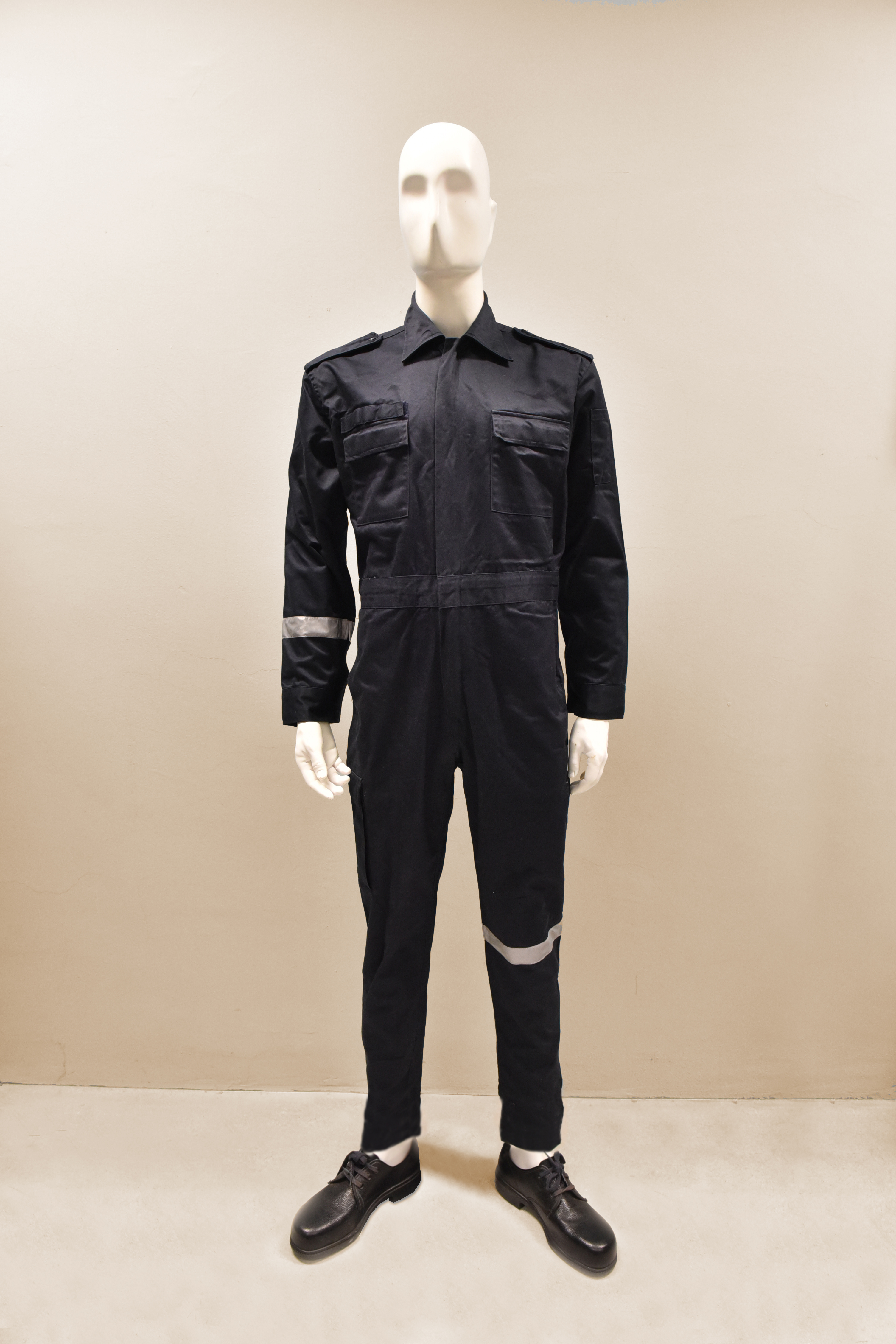
1987
In this year, blue overalls were introduced as the Navy’s working uniform. It was made of cotton and only had two shirt pockets. Although it shared its design with the green overalls used in the Army, the colour distinguished naval personnel from the other services.
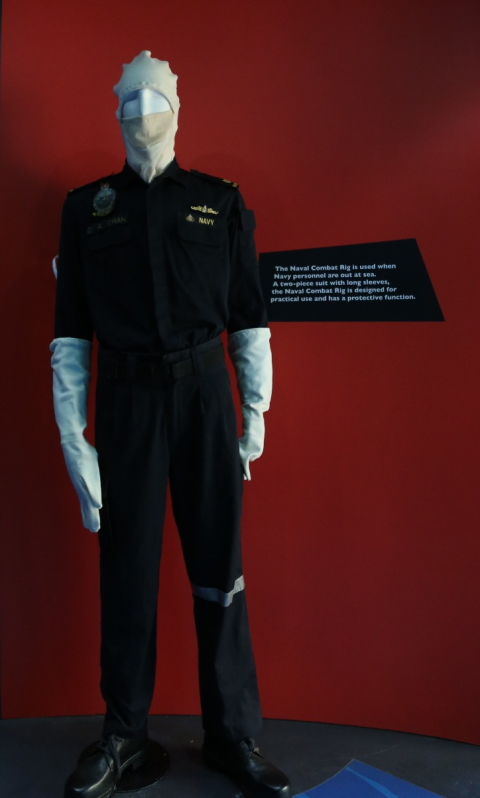
2005
The Naval Combat Rig (NCR) was introduced to replace the blue overalls. It included safety features such as reflective strips on the right arm and left leg, making sailors more visible; it was also made of fire-retardant material. A two-piece outfit, the NCR was designed to be a more comfortable and convenient uniform than its predecessor.

2012
The Navy pixelated uniform was introduced to replace the NCR as the working attire for Navy personnel. The white-and-grey design helps our sailors blend in with the superstructure of the ship, improving their survivability during battle. Safety boots for the rig was also designed to be easily removed with a zipper.


